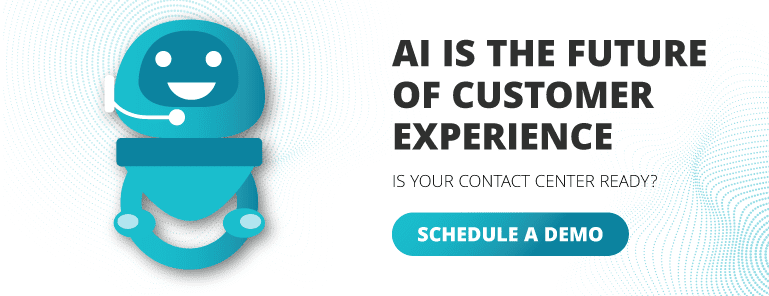Do you love your customers?
No seriously? Do you love them? If so, how are you showing it? Are you structuring your customer experience to be simple and seamless? Have you removed points of friction in your processes to help them feel loved by your company? Is your customer experience a competitive differentiator for your team?
Customer experience is a top priority for most competitive companies today and likely will be for the next half a decade, according to research from SuperOffice. In their latest business priority survey, customer experience snagged the top spot—beating out pricing and product. (By a lot.)
And it makes sense why. Temkin Group found that companies that earn $1 billion annually can expect to see, on average, an additional $700 million within three years of investing in customer experience. SaaS companies can expect to increase revenue by another billion with the CX investment.
But how do you make sure your customer experience is up to par? Enter customer journey mapping—a powerful tool that lets you see and optimize every step your customer takes. By mapping out their journey, you can spot areas that need improvement and create strategies to improve their experience.
So, what exactly is customer journey mapping, and how can it help you understand and improve your customer’s experience? Let’s dive in.
What is Customer Journey Mapping?
At its core, customer journey mapping the path your customer takes when they interact with your business. It’s more than just following a call from start to finish. It looks at every interaction and touchpoint to gain an understanding of how your customer feels at each step. Think of it as the emotional GPS guiding you through their experience, from that first inquiry to resolution.
Customer journey maps break down key elements like:
- Touchpoints: All the places where customers interact with your business, whether that’s over the phone, on your website, via email, or through social media.
- Channels: The different platforms customers use to contact you, from self-service portals to live agents.
- Pain Points: These are the roadblocks or moments of frustration that cause dissatisfaction. These could be long hold times, needing to repeat information, or unclear self-service options.
- Customer Sentiment: This element captures how customers feel at each stage—confused, frustrated, satisfied, or relieved.
If you’re a contact center manager, understanding these elements is crucial to solving two of your biggest challenges: building stronger customer support strategies and boosting operational efficiency.
Imagine a customer, Anna, who contacts your team for help with her account. First, she tries self-service on your website, but the instructions aren’t clear. So, she calls your support line, waits on hold for 15 minutes, and finally talks to an agent who doesn’t have all the necessary info. By the end of the call, Anna is frustrated, and her issue isn’t fully resolved. A detailed journey map would’ve highlighted these friction points, giving you the insight to fix them before customers like Anna get upset.
The Strategic Value of Customer Journey Mapping
The value of customer journey mapping isn’t just theoretical—it’s strategic. Many contact centers deal with a few key pain points: escalations, repeat contacts, and inefficiency. With journey mapping, you can pinpoint where things go wrong before they explode into bigger issues.
For instance, let’s talk about call escalations, one of the top headaches for contact centers. Escalations usually happen when customers run into friction during their journey, like inconsistent information or long response times. With journey mapping, you can identify those friction points and work to smooth them out.
Take Sam, a contact center manager who decided to dive deep into journey mapping. By mapping out his customer’s touchpoints, he found that most escalations happened during billing inquiries. Turns out, many customers were confused by the way bills were presented, leading to unnecessary calls and longer-than-average handle times. Armed with this knowledge, Sam streamlined the billing process, added a self-service option and implemented better training for agents. As a result, he reduced average handle time by 20%. Boom—problem solved.
Journey mapping also empowers managers to optimize how they allocate resources. If you know that certain touchpoints—like online chat or email—tend to trigger repeat calls, you can beef up agent training and provide tools to resolve those issues faster. In other words, it helps you align agent resources and training based on real customer interactions instead of just guessing.
The Steps to Getting Customer Journey Mapping Right
Ready to get started? Let’s walk through the exact steps to create a journey map that actually delivers actionable insights.
Step 1: Identify Your Customer Personas
Before you even start mapping, you need to know who you’re mapping for. Identify your key customer personas—those archetypes of your typical customers. What are their goals? What challenges are they facing? The clearer your personas, the more effective your journey map will be.
Step 2: Establish Your Goals, Outcomes, and KPIs
What’s the purpose of your map? Are you trying to reduce escalations? Improve first call resolution (FCR)? Define your goals upfront, along with the key performance indicators (KPIs) that will help you track progress.
Step 3: Outline the Customer’s Touchpoints
Now, break down every interaction your customer has with your business. Are they starting with self-service? Moving to live chat? Calling customer support? Outline the full journey, whether it’s a short interaction or a more complex multi-step process. Use a whiteboard like Miro or Lucid to start documenting the process before you invest in a customer journey mapping technology to help your contact center.
Step 4: Map Sentiment at Each Stage
Understanding how your customer feels at each stage is key. Are they frustrated with long hold times? Confused by conflicting information? Mapping sentiment helps you understand where customers feel friction and why.
Step 5: Analyze Your Metrics and KPIs
Now that you’ve mapped the journey, it’s time to dig into the data. Analyze the metrics—like call length, escalations, and FCR—to see where your biggest problems lie. Turning insight into action is where the magic happens (more on this later).
See which call center efficiency metrics you should be tracking.
What to Avoid as You Get Started With Customer Journey Mapping
There are a few common missteps that can trip you up when you start with customer journey mapping. Here’s what to avoid:
- Overlooking internal data silos. Journey mapping is only as good as the data you use. If your customer interactions live in separate systems that don’t talk to each other, your map will be incomplete.
- Ignoring omnichannel insights. Customers don’t just call. They tweet, they chat, they email. Ignoring any of these channels gives you a skewed view of the customer experience.
- Ignoring your customer’s feedback. Data’s great, but direct customer feedback is pure gold. Make sure you’re gathering and using feedback to build your map.
Turning Insight into Action
Once you have your journey map in hand, it’s time to turn those insights into action. A detailed journey map allows you to redesign workflows, train agents, and create personalized customer engagements at scale.
Let’s look at a quick case study: A mid-sized contact center used customer journey mapping data to see that many of their escalations stemmed from agents lacking the right information during the first customer interaction. With this insight, they revamped their onboarding process. They added targeted training based on the most common customer pain points. This reduced escalations by 30% and improved FCR dramatically.
But here’s the key—journey mapping isn’t a one-and-done project. You have to revisit and refine your map continuously. Customer behavior changes, and so should your strategy. By regularly updating your journey map, you’ll not only reduce friction but also foster customer loyalty and reduce churn.












